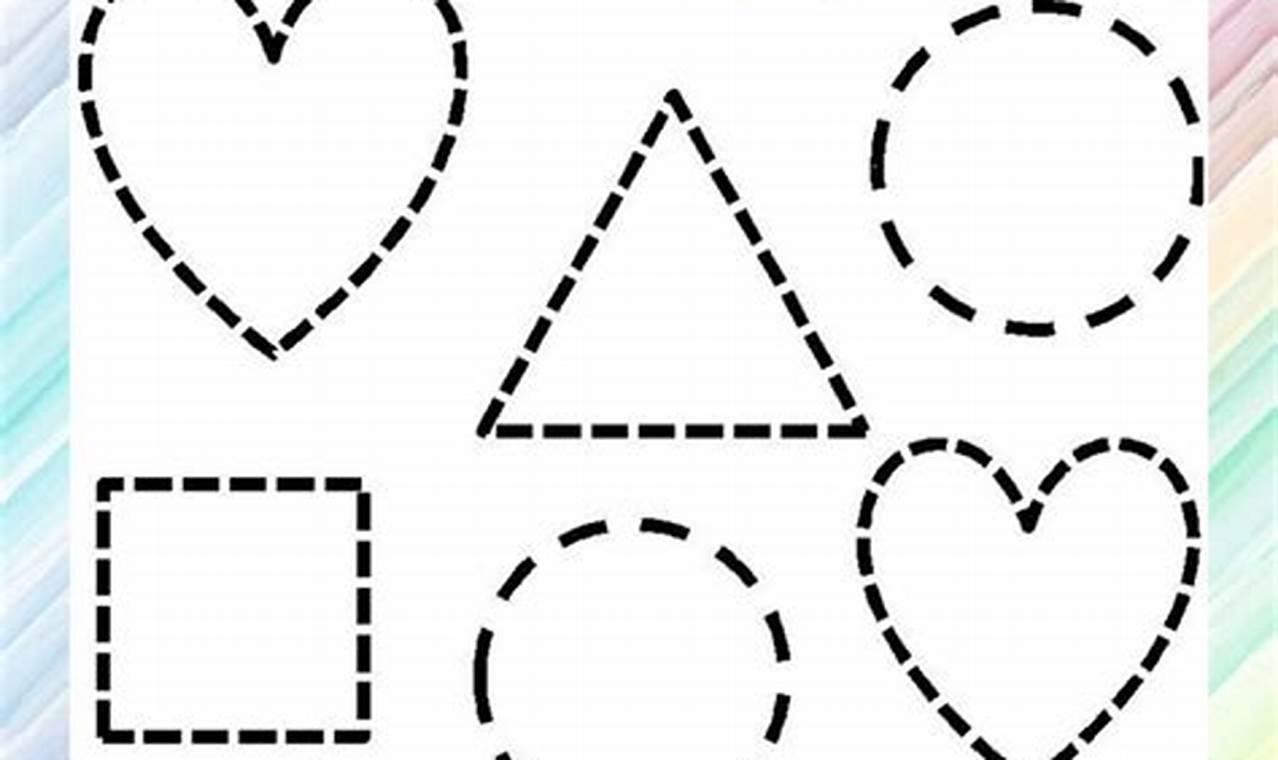Early childhood is a crucial period for developing foundational skills. One important area of focus is the ability to recognize shapes and practice tracing. These activities build a strong base for handwriting, visual perception, and fine motor skills, setting the stage for future academic success. Engaging with shape recognition and tracing helps children develop the necessary skills to excel in later learning.
The benefits of utilizing shape recognition and tracing activities are numerous. This type of worksheet enhances hand-eye coordination, improves pencil grip, and fosters concentration. By tracing various shapes, children develop the hand strength and control needed for writing. Moreover, recognizing different shapes expands their visual vocabulary and lays the groundwork for understanding spatial relationships in mathematics and other subjects.
This worksheet focuses on shape recognition and tracing activities. It contains a variety of common shapes such as circles, squares, triangles, rectangles, and ovals. Each shape is presented with a dotted outline for tracing. The worksheet features clear, bold lines to assist young learners in staying on track. Ample space is provided for repeated practice, allowing children to build confidence and refine their tracing skills. Simple, engaging illustrations accompany the shapes, making the activity more enjoyable and stimulating.
To use the worksheet effectively, begin by introducing each shape to the child. Pronounce the shape’s name clearly and point to its visual representation. Next, guide the child in tracing the dotted lines, encouraging a slow and steady pace. It is helpful to use a thick pencil or crayon initially, as these are easier for small hands to grip. Break the activity into smaller segments to prevent fatigue. Praise and encouragement are essential to maintain the childs interest and motivation.
To complement this shape recognition and tracing activity, consider exploring other resources that reinforce these skills. Kidtraces.com offers a variety of related worksheets focusing on letter tracing, number recognition, and pattern completion. Educational games, such as shape sorters and puzzles, are also beneficial. Reading books with vivid illustrations of shapes can further enhance learning. Incorporate shape-related activities into daily routines, such as pointing out shapes in the environment during walks or playtime.
Shape recognition and tracing activities provide a solid foundation for essential skills. The structured approach and engaging design of this worksheet make learning fun and effective. Download and try the worksheet to support a childs development of fine motor skills and visual perception. Explore more free worksheets on Kidtraces.com to support continuous learning and skill development.
